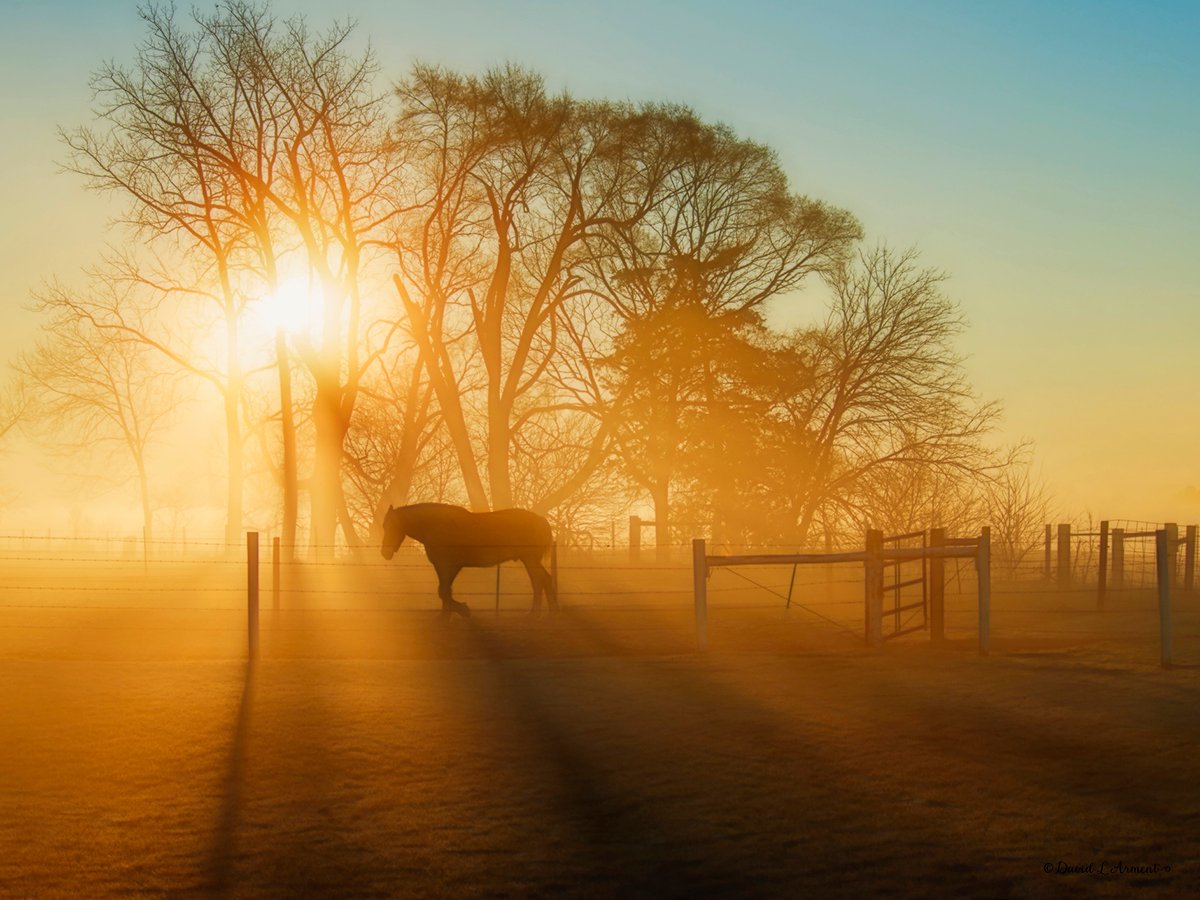MANITOBA
SOUTHWEST
Rain ends seeding
Storms that dumped 10 to 50 millimetres of rain early last week ended any chance of seeding this year for producers who have been dealing with soggy fields all spring.
Seeding progress ranges from 25 to 40 percent complete in the Killarney-Boissevain area to 15 to 25 percent near Souris and 65 percent complete around the Yellowhead Highway.
Many producers have abandoned the idea of seeding by plane because fields are too wet for harrowing.
Read Also

Can folklore predict winter weather?
I thought it might be fun to take a closer look at some weather folklore and try to dissect them a little bit to see if they are or can be used to predict future weather.
CENTRAL
Farmers fight weeds
Seeding progress is 75 to 100 percent complete, with the exception of the area around Gladstone, where only 25 to 50 percent of fields have been planted.
Herbicide application has begun on early seeded crops because dandelions have infiltrated hay fields and cropland. Flea beetles are munching on canola, but diamondback moth counts are low.
Pastures are rebounding from the wet spring as warmer weather promotes growth.
NORTHWEST
Crops looking good
Most crops are up and looking good near Roblin and Swan River, two areas that avoided the spring rain that has plagued other parts of western Manitoba.
Wheat near Roblin and Swan River is tillering. Flea beetles have been spotted on fields with canola-oncanola rotations.
Twenty-five to 50 percent of fields are still swamped east and north of Dauphin and will likely go unseeded this year.
EASTERN
Development hampered
Seeding is complete for corn, peas, soybeans and barley.
As well, producers have nearly finished planting canola, oats and wheat.
Drenched fields are hampering plant development in parts of the region, but farmers report that most canola and soybeans have emerged.
Yield potential for winter wheat looks good. Crops are in the flag leaf or early boot stage.
Hay fields are looking good and a third of the alfalfa crop is harvested.
INTERLAKE
Completion varies
Eighty percent of the southern Interlake has been seeded. Producers are spraying canola, cereals and soybeans for weed control.
Seeding hovers around 50 percent farther north near Arborg and Riverton as persistent wet conditions hinder progress.
Pasture production may be limited because producers will be forced to overgraze highlands. Lowland pastures are too soft for cattle to cross.
ALBERTA
SOUTH
Plenty of moisture
Southern Alberta has enough moisture. There are plenty of wet patches and standing water as rain showers continued throughout the week.
About 95 percent of the region is seeded, but close to 350,000 acres will not be planted. Seeding deadline to qualify for crop insurance was June 20, so some will not be eligible for claims.
The traditionally dry southeast region is reporting lush conditions, thanks to plenty of rain, but heat is needed to bring crops up to speed.
Weed growth has also been slow.
CENTRAL
Rain welcomed
Welcome rain of 25 to 175 millimetres appeared throughout the week to rejuvenate pastures and help poorly emerged crops.
Cereal crops look the most promising, but canola emergence was patchy because of drought and later frost damage.
Pasture production was below average, but showers should help with regrowth.
NORTHEAST AND NORTHWEST
Emergence spotty
The Vermilion and Vegreville districts have spotted cutworms, and spraying is underway.
All seeding was complete, but emergence was spotty because of dryness. Several June frosts damaged alfalfa crops that have been slow to recover.
The first rain of the season arrived and left 25 to 50 mm of rain, which is expected to spruce up pastures and crops. Pastures were in poor shape in many regions because of lack of moisture and no heat.
Crops are now in very good to excellent condition east of Edmonton, thanks to timely rain June 15-16.
About 85 percent of herbicide applications are complete, so weeds are under control.
PEACE
Rain needed
The region could do with 25 mm of rain and some heat. Many fields have spotty emergence, with cool, dry weather and occasional showers.
Many canola crops seem to have stalled at around the four leaf stage. Spraying has been required for red-backed cutworms. Grasshoppers have been seen and could worsen if dryness continues.
Early seeded crops emerged well but drought stress will set in if no rain is received this month.
SASKATCHEWAN
SOUTH
Excess moisture
Rain and excess moisture continued to cause problems for producers in many parts of southern Saskatchewan last week.
In the southwest, farmers had seeded 82 percent of their crop as of June 13, up five percent from the previous week.
Seeding progress and field conditions are variable across the southwest, with some areas less than 40 percent complete and others 100 percent complete.
Significant acreage will go unseeded in some municipalities.
Moisture is excessive in many rural municipalities. Producers south of Moose Jaw and Regina and others further west toward the Alberta border are having trouble accessing fields.
Throughout the southwest, topsoil moisture is rated at 37 percent surplus, 61 percent adequate and two percent short.
All regions of the southeast reported more rain and further delays during the second week of June.
Topsoil conditions throughout the southeast are 76 percent surplus and 24 percent adequate.
Flooded and moisture-stressed crops are common. Many cattle producers are dealing with flooded pastures, corrals and hay fields and are having a tough time processing herds.
CENTRAL
Progress variable
As of June 13, seeding progress was 86 percent complete in east-central Saskatchewan and 99 percent complete in west-central.
Progress is variable in east-central, with some areas less than 20 percent complete and others finished.
Producers in some areas are looking at alternative seeding methods. Growers in the southern and eastern extremities of east-central Saskatchewan are generally the wettest.
Flooding is common in many areas and roads are in poor shape. Further north, moisture is needed.
Crop damage in east-central regions is primarily caused by flooding. Flea beetles and cutworms are an issue in some fields.
Topsoil in the east-central region is rated as 23 percent surplus, 72 percent adequate and five percent short.
As of late last week, roughly two-thirds of spring cereal and oilseed crops were behind schedule. Half of pulse crops were behind normal development.
In west-central Saskatchewan, seeding was 99 percent complete and many areas were hoping for rain.
Showers rolled through most of the region in the second week of June, but other growers are still looking for moisture.
Insects are causing crop damage and some fields were showing stress from lack of moisture.
NORTH
Good condition
Producers in northeastern Saskatchewan seeded 98 percent of their crop as of mid-June. Most crops were in good condition and many areas received rain in the second week of June, ranging from five mm in the Prince Albert area up to 47 mm around Melfort.
Topsoil moisture throughout the region was rated as seven percent surplus, 76 percent adequate, 16 percent short and one percent very short.
Hay and pasture land was in generally good condition.
Sixty-two percent of spring cereals, 58 percent of oilseeds and 70 percent of pulses were at normal stages of development as of last week.
Cattle are on pasture and farmers were spraying.
Timely rain would be welcome in most areas.
Seeding was mostly complete last week In northwestern Saskatchewan with the exception of areas around Meadow Lake, where rain caused further delays.
Farmers in the northwest generally welcomed the rain that fell during the second week of May. Many growers were hoping for more moisture to help pastures and boost crops.
















